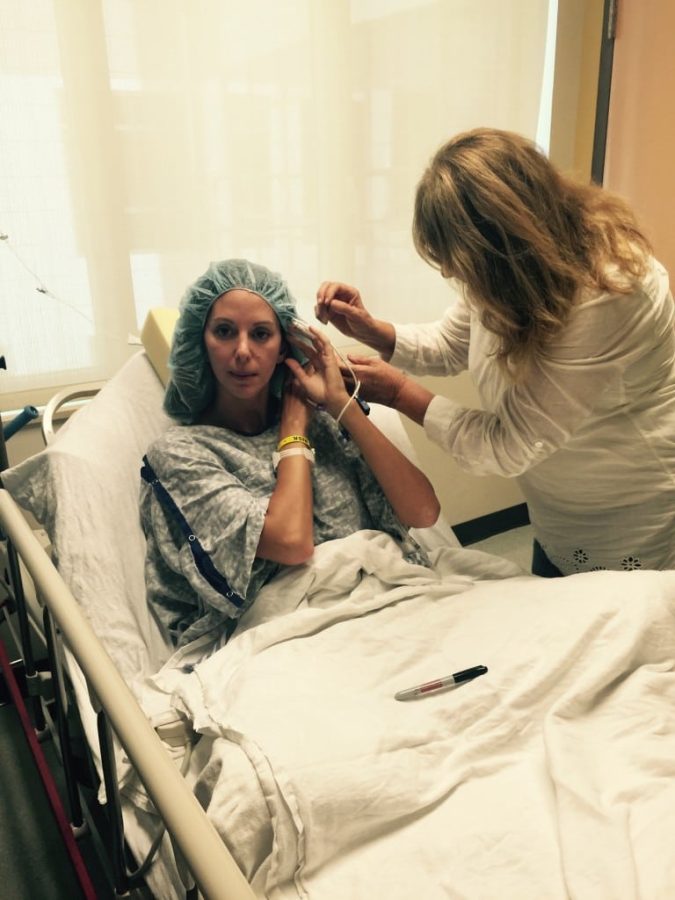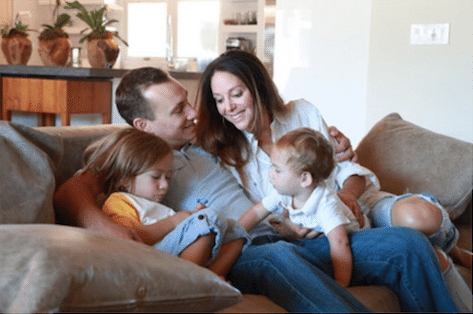On my 39th birthday, my best friend, who also happens to be my business partner and gynecologist, showed up on my doorstep bearing a gift of bad news: I had tested positive for the BRCA 1 genetic mutation. As a gynecologist myself, I couldn’t believe it. How was this possible? I have no family history of female cancers! I am, however, of Ashkenazi Jewish descent and lost my father to pancreatic cancer and grandfather to colon cancer. I was in shock. I was now looking at an 87% risk of breast cancer and a 44% risk of ovarian cancer. Without hesitation and driven by the desire to be a mother to two amazing little boys and the wife of an incredible man, I scheduled my full hysterectomy, double mastectomy, and breast reconstruction surgeries. I am now recovering from both with a strong voice and an even stronger conviction to get the word out.
In medical school I took an oath to do no harm. I have failed my patients, because I failed to get their detailed family histories that included not only breast and ovarian cancers, but also prostate, pancreatic, colon, melanoma, renal/ureteral, and stomach cancers. Sure, the obvious patients with sisters or mothers who had had breast cancer were offered the genetic screening test, but the science is now so much more advanced. More than 25 genes are now associated with hereditary breast and ovarian cancers (HBOC). In the general population, one in 400 people is walking around with these faulty genes, and one in 40 people of Ashkenazi Jewish descent is also a carrier. When a patient’s history is unknown, such an omission can lead to future disease. This lack of information can become our breast mass, our reason for chemo, and potentially our cause of death. With knowledge, however, we can rewrite our biographies. We have the option to increase surveillance of the organs that are at an increased risk of developing cancer, and we have the option to remove them as well.
Current recommendations for women at risk of HBOC include alternating breast MRIs, mammograms, and pelvic ultrasounds yearly with CA-125 levels. Definitive surgical management includes the removal of fallopian tubes and ovaries and a bilateral mastectomy. These lifesaving procedures can decrease the risk of developing the respective cancers to near that of the general population. The decision is a personal one and often depends on where we are in our life cycle. Learning my status at the age of 39, I had completed my child-bearing. A younger patient has a much more difficult decision, but thanks to modern technology, the option of increased surveillance is still available.
On my 39th birthday I became a smarter, stronger person and a better physician. I now focus on each patient’s family history. This is my physical exam, as well. I was recently asked if I felt like less of a woman because I no longer had a uterus or ovaries, and because my breasts had been removed and replaced with silicone implants. My answer?–I feel more like a woman. I will remain a mother, I will remain a wife, and I will help other women gain strength through knowledge and prevention–because I’ve still got a lot of fight left in me.
Rebekah Richmond, MD
Please feel free to contact me with any questions or discuss your options for genetic testing.



















Rebekah – Thank you so much for sharing your story with both personal and professional insight. I KNOW it had made you a much better woman and physician of women, as these experiences always do when you allow them to. Well Done! and Thank you for the care that you provide to the women of Jax.
– Emily Wannenburg